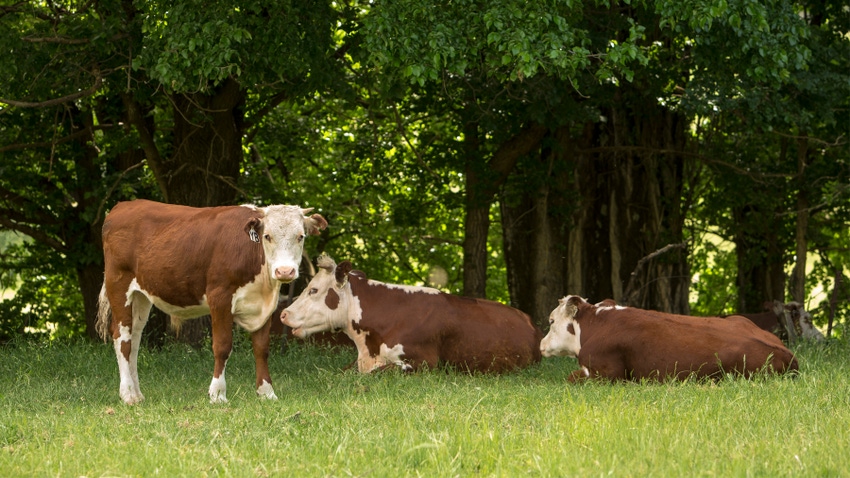January 12, 2024

by Liz Gartman
The summer of 2023 taught us numerous lessons as our wet spring turned to a droughty summer across Wisconsin. While well-timed rains boosted yields for row crops and alfalfa fields, the same can’t be said for many of the pastures across the state, especially those under continuously grazed management.
Many livestock producers found themselves sourcing and feeding hay and other alternative forages, while others began liquidating animals and reducing herd size to deal with feed shortages.
Without looking back and learning from our challenges, we could easily fall into the same situation as extreme weather becomes our new normal. What can you do to help revitalize pastures and create grazing systems that are more resilient in the face of changing weather patterns?
What is managed grazing?
First off, consider your current management system. Are you using continuous grazing or managed grazing? Continuous grazing typically involves one large pasture that animals graze at will. Livestock have access to the full pasture during the grazing season. This is attractive to many producers because it is a low labor and management system. The producer only needs a perimeter fence and does not plan for moving animals throughout the season.
Unfortunately, this is where the benefits end. Continuous grazing typically results in the cascading effects of the following adverse scenarios:
overstocking of pastures
overgrazing of forage
selective grazing of desirable species
forage composition shifts to undesirable species
increased weed presence
less forage produced per acre
inefficient forage utilization
poor nutrient distribution, with manure concentrated in certain areas
In drought years, these issues tend to be magnified, resulting in producers going into damage control as feed supplies get tight. When plant growth is limited, we are tempted to allow animals to continue grazing. But doing so increases stress on the plant, affecting its ability to regenerate. Overgrazing leaves room for weeds and undesirable species to establish as desired forage species struggle to survive, further diminishing the value of the pasture.
This is where managed grazing systems come into play. Yes, managed grazing systems take time and skill to get the most bang for your buck — but this is the best opportunity to improve forage quality and production, increase animal productivity, and improve soil health, particularly on marginal land.
The following are some key components to managed grazing systems:
Establish a grazing plan. Consider the key resources that you have, and those you need to put into place. Identify your water source, soil type, soil fertility, existing fence and current forage species. This will help you determine the best opportunities for improvement moving forward. Reach out to your local Natural Resources Conservation Service office for more information. They can help develop an improved grazing plan and may be able to provide cost-sharing opportunities. Resource Conservation & Development councils across the state can also help you get started.
Determine the appropriate stocking density for your management system and land. Realistically identify how many head the pasture can support. You need to have enough animals to maximize your forage resources, but not so many that your land base cannot support them efficiently. Determine how much your animals eat per day (dry matter intake), determine how much forage your pastures produce and then calculate your stocking density. Using a grazing stick is an easy way to help you determine forage yield and plan for season-long grazing.
Give plants a chance. For plants to thrive, you should target moving animals at least every three to four days, leaving behind a minimum of 4 to 6 inches of plant residual, and allow about 30 days of rest for proper regrowth. This allows enough foliage for the plant to photosynthesize and regrow. Don’t be tempted to rotate more quickly when rainfall is short.
Realize that you might need to supplement forage. In dire circumstances, providing stored feed is a preferable alternative to grazing paddocks before they have had the chance to recover. Grazing paddocks too soon will reduce the future productivity of that paddock. Be proactive and plan for this possibility by procuring extra feed, and employ a feeding strategy such as a sacrifice paddock or drylot while your pastures recover.
Managed grazing is by no means a “plug-and-play” system, and you will have to figure out what works best for you. However, by taking an active role in the management of your grazing, your pastures can perform well, even when faced with stress. Looking for more information? Pastures for Profit is a great resource to get you started developing your managed grazing system and allowing your pastures to be more resilient to extreme weather.
Gartman is the University of Wisconsin Extension regional crops educator for Sheboygan, Fond du Lac, Washington and Ozaukee counties.
You May Also Like




